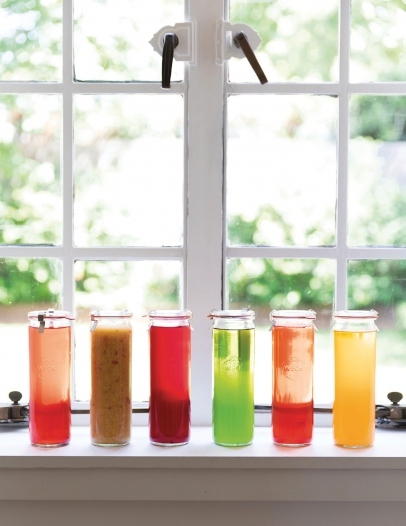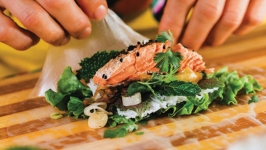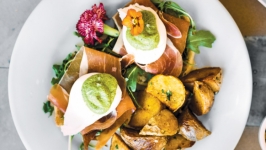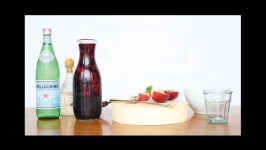Summer in a Bottle
Sometimes I find my mind wandering in the middle of kitchen tasks or prep. “Who was the first person to make this?” “What inspired them?” “Was it out of necessity or was it a ‘happy accident?’” These thoughts often occur in the midst of (and about) preservation. Whether it’s storing something in a cave, fermenting something in a barrel, coating with wax, pickling, salt-curing, or canning; preservation is a diverse concept available to virtually any food category and is a pivotal food-handling technique in human history, second only to cooking with fire in my opinion.
Food preservation is the process of treating and handling food in order to delay or prevent its spoilage, while maintaining flavor and nutrition over an extended period of time. Practically, food preservation means we can enjoy blackberries in December, summer sweet corn in March, and, my favorite, garden-grown heirloom peppers throughout the year.
Jam-making is my preferred preservation technique and a satisfying hobby. There is a rhythm to it. It can be meditative. But this summer, with 480 jars spread among 15 varieties, I might have gone overboard. Why? A reasonable person might ask.
One word: chaos. We moved homes, lived with family between the sale of one home and the completion of another, our kids traveled abroad or went on missions to Tyler, Texas, and Tulsa, jobs changed, schools changed — all with 98% of our belongings spread over more storage units than I’m comfortable admitting in print.
Throughout the bossy chaos, I found myself craving the predictable rhythms of preserving food. It slows the passage of time and whispers a promise of (hopefully) brighter, calmer days. I might not be able to control the kids getting older, moving off to college, and traveling beyond my reach. I might not be able to control the upheavals of home-selling, moving, and job changes. But I can control the effects of time on sand plums and blackberries and heirloom peppers and sweet corn and beets. Those simple, repetitive motions of measuring, chopping, boiling, and canning are so satisfying. With every pop of a sealed lid, I became more and more settled. It may have taken several hundred sealed jars, but one truth emerged: The chaos won’t last forever and things will settle … eventually.
Jams and jellies might require more time and attention than you’re willing to give. However, not all preservation techniques are so demanding. A very easy way to extend the flavors and colors of summer beyond the season itself is through infusing oils and vinegars.
This infusion occurs by macerating herbs, fruit, or vegetables in a neutral oil or vinegar (like canola oil or white vinegar). Depending on the variety, some infused oils and vinegars can be very vibrant and intense while others are more muted. Once infused, they can be stored and used to add flavor into your favorite recipes such as marinades, vinaigrettes, or soups.
Like jam-making, there’s a pattern and tempo to infusing oils and vinegars that can be not only rhythmic, but meditative. The specific techniques for each variety can vary slightly, but I routinely follow a basic ratio:
Vinegars: I use a 2:1:2 ratio, meaning 2 cups of fruit or vegetables to 1 cup of distilled water and 2 cups of vinegar.
Oils: I use a 1:1 ratio, equal amounts of produce to oil.








